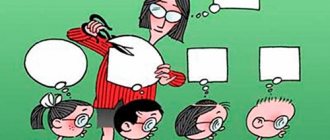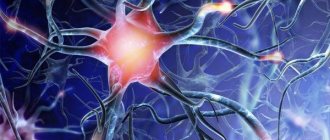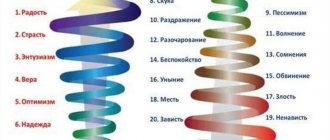Emotions are a special class of subjective psychological states, reflected in the form of direct experiences, feelings of pleasant or unpleasant, a person’s attitude to the world and people, the process and results of his practical activity.
The class of emotions includes moods, feelings, affects, passions, and stress. These are the so-called “pure” emotions. They are included in all mental processes and human states. Any manifestations of his activity are accompanied by emotional experiences.
In humans, the main function of emotions is that thanks to emotions we understand each other better, we can, without using speech, judge each other’s states and better tune in to joint activities and communication. Remarkable, for example, is the fact that people belonging to different cultures are able to accurately perceive and evaluate the expressions of a human face, and determine from it such emotional states as joy, anger, sadness, fear, disgust, surprise. This, in particular, applies to those peoples who have never been in contact with each other.
Emotions act as an internal language, as a system of signals through which the subject learns about the need-based significance of what is happening. The peculiarity of emotions is that they directly reflect the relationship between motives and the implementation of activities that correspond to these motives. Emotions in human activity perform the function of assessing its progress and results. They organize activities by stimulating and directing them.
Emotions. What it is?
In psychology, emotions are characterized as a mental process of medium duration, which conveys a subjective evaluative attitude towards existing or possible situations.
Only a developed personality with a strong character and powerful motivation is able to control his emotions, correctly express and understand his feelings.
Do you think that emotions are a “medium-duration process”?
Not always. If it's on average, yes. For example, I can be angry for a short time, but love for a very long time. Fair? Yes.
16.67%
Absolutely. Especially in our time, when any emotion is more often fake than sincere. I think that all emotions are moderately fake and moderately long-lasting.
33.33%
Don't think. My emotions grip me very strongly, I cannot get rid of some for weeks and even months.
50%
Voted: 6
What are emotions - definition and meaning
Human emotions are a mental process that arises in accordance with current situations.
The manifestation of emotions can be of different directions, and have both negative and positive connotations. This depends on the subjective evaluative opinion of each person. In simple language, emotions can be called the possibility of manifestation of experiences in the soul due to any situation. Translated from Latin, this word means “wave” or “shock.”
Thus, this is a certain process in which a person is not in a neutral state: he evaluates the situation with a certain sense of experience.
This condition overtakes a person from the inside. Externally the following signs appear:
- facial expressions;
- gestures and body position;
- voice;
- general behavior.
For example, you slipped on the street. In such a situation, many thoughts instantly arise in a person’s head: “How slippery! Now my leg hurts! You'll have to go to the emergency room.
Why do I even live in a country where there is winter?!” After assessing what happened, you will have a choice: silently keep your resentment and irritation to yourself, or lash out at some person, and it doesn’t matter whether you know him or not. Thanks to emotions, something special appears in our lives, motivating us to live.
Gray everyday life is brightened up with various feelings. Emotions help us live. Without them, human life would be like a robot's existence. Feelings are what distinguishes us from other creatures and objects.
Types of emotions
Emotions are psychological states that are characterized by experiences and sensations of different nature and express a person’s satisfaction or dissatisfaction.
The main types of emotional experiences include:
- affects;
- mood;
- feelings;
- emotions.
Affects are emotional outbursts that occur with particular intensity and are short in time. These include: rage, intense joy, deep grief, despair, horror. This is the most powerful type of psychological experience.
A feature of the affective state is the individual’s loss of a sense of reality; he moves erratically and uncontrollably. In this state, people may lose the ability to speak and become numb. Having become, for example, participants in natural disasters or catastrophes, they become “petrified” in an affective state and do not move, sometimes they can run randomly and aimlessly to sometimes even dangerous places.
In affect, attention is concentrated only on those stimuli that are directly related to the experience, all others remain unattended.
In a state of passion, some people can control their actions and organize their thoughts. These are emotionally stable individuals, with highly developed volitional characteristics, inherent at the genetic level or resulting from upbringing.
Have you encountered a state of passion?
I myself (myself) are one continuous affect. Alas and ah, but I even like it.
20%
I often encounter this situation. The emotions that provoke it can vary from rage to joy.
20%
No, I am a rational person who does not give in to any outbursts.
60%
Voted: 5
Mood is one of the most long-lasting emotions that influence actions and actions in general. A person’s mood conveys an unconscious collective assessment of the events happening to him in the present.
The peculiarity of mood is that its reasons are not always clear and obvious both to the individual himself and to his environment. Each of us has probably heard about causeless joy or unaccountable sadness.
However, the cause of mood is present in all cases: human activity, the environment and people encountered along the way, events occurring in the past or present. It sometimes becomes a characteristic feature of an individual.
The importance of a person’s mood for his normal life is difficult to overestimate. A good mood significantly improves the efficiency of his life and even the most difficult task or problem seems feasible, and sometimes even trivial. In a bad mood, work seems difficult and impossible, it becomes a burden.
A person’s mood is greatly influenced by his personal self-esteem and the degree of his demands. Individuals with high self-esteem are more often characterized by high mood and ease of communication, while people with low self-esteem tend to be in a bad mood, have a pessimistic attitude towards life and the development of any events.
Such a state leads to apathy and a decrease in a person’s ambitions, demands and aspirations.
How often does your mood change?
Every 5 minutes. In this regard, I am impermanence itself. I can laugh loudly and rejoice, and then start crying a minute later.
33.33%
Oh... Very rare. If some emotion takes hold of me, it lasts for a long time. Relatively, of course.
16.67%
In general it is stable, but some factors, events or reasons can throw me out of the rut of a particular mood.
50%
Voted: 6
Feelings are the most enduring of psychological states. They have specificity, objectivity and vague external signs. Feelings allow you to form an attitude towards a stimulus. They need an object. A person cannot experience love without its object.
Feelings have enormous weight in all spheres of human life, they contribute to the formation of the motivation of an individual who strives for things and people that evoke positive feelings in her: she is looking for a job she likes, the most comfortable living conditions.
Feelings are individual, and what one person is delighted with may cause diametrically opposed feelings in another. It all depends on the value system of the individual.
The highest feelings that determine the versatility of a person’s inner world and the authenticity of human relationships require special attention.
There are high feelings:
- moral, which depend on traditions, ideology, religious trends, norms and rules of behavior developed by the society where the individual exists.
- intellectual, i.e. generated by human mental abilities. Examples of such feelings are curiosity, distrust of the correctness of the chosen decision, and surprise.
- aesthetic, determining the individual’s attitude to art and the surrounding nature. They express admiration and enthusiasm for fiction, paintings, music and other forms of art. Sometimes these are opposite feelings - melancholy, suffering, sadness.
The division of feelings into types is arbitrary. As a rule, a person’s feelings are multifaceted and have several components. Therefore, it is difficult to assign them to only one of the species.
Classifications of emotions in psychology
The identification of positive/positive, negative/negative and neutral emotions is the simplest and most common classification. This classification unites emotions by meaning; in addition to it, there are also classifications:
- By intensity and duration: moods, emotions, affects, passions;
- By content (modality): joy, surprise, anger, disgust, shame;
- According to the degree of mobilization of the body: sthenic (increasing the vital activity of the human body) and asthenic (suppressing vital processes).
Leontief classification
Another one is the classification developed by A. N. Leontyev. It is based on separation by source of origin. In his work “Needs. Motives. Emotions" A. N. Leontyev indicates that, in his opinion, they can be caused by:
- Contempt from an individual, group of people, society;
- Personal needs, as well as the degree of satisfaction;
- Other people's needs Comparison of the real self with the ideal one. This point is associated with internal attitudes, prejudices, values, ideals;
- Comparison with established standards that prevail in society;
- Social relationships.
A. N. Leontyev developed his own classification of human emotions
Dodonov classification
Psychologist B.I. Dodonov said that creating a universal and accurate classification is impossible. However, I still made a classification based on a person’s perception of the value of the process and the result. This classification looks like this:
- Altruistic. Altruistic ones arise from the desire to bring joy to another person, therefore they are characterized by feelings of pity, care, empathy and the like.
- Communicative. This group is associated with public communication and social interaction in general. These include sympathy, gratitude, respect, etc.
- Gloric. People often experience superiority, self-esteem, and pride in an effort to assert themselves and gain fame.
- Praxic. These are associated with a person’s desire and need to achieve success in professional activity. For example, tension, passion for the work process, satisfaction when completing tasks.
- Pugnetic. Those associated with risk and sports passion are called pugnistic. They appear in the desire and need to feel thrills, overcome dangers and the like.
- Romantic. They are associated with a feeling of special significance, the unknown, and sensuality.
- Gnostic. Derived from the Greek “gnosis” - knowledge. They appear in connection with intellectual needs, motivation for knowledge, for harmony, which consists in learning more in order to know oneself. Dodonov includes bewilderment, clarity, and delight in achieving the truth.
- Aesthetic. They manifest themselves in the need to enjoy beauty, sublimity, and drama. These can be light sadness, loneliness, thoughtfulness.
- Hedonistic. In other words, dictated by the need for mental comfort. For example, carefree, serenity, calm, euphoria.
- Active. Associated with collecting and purchasing. They are experienced by people, for example, who have made a purchase of a new desired thing.
In science, it is most often recognized that it is impossible to single out a single classification of human emotions
Definition of emotions
People often pay attention to each other's emotions and behavior. An individual's facial expressions and gestures can tell a lot about the emotions that he experiences.
Emotions are long-term states, reactions to events occurring in the present or past. Emotions can be positive and negative.
Positive emotions
They, like nothing, affect people’s well-being. Experts have long confirmed that feelings of joy, happiness, and optimism can lead a person to a healthy life.
Positive types of emotions include:
- Interest-excitement – motivates to learn, improve skills and abilities, and creativity. With this emotion, curiosity and passion increase;
- Joy is associated with the satisfaction of especially important life needs;
- Happiness - experiencing it, a person feels bliss, pleasure, love;
- Gratitude is a feeling of psychological comfort associated with a feeling of appreciation and recognition for the kindness provided.
Negative emotions
They can have a negative impact on human health and even play a decisive role in the formation of personality. By the way, affects also refer to negative emotions.
Negative types include:
- Suffering - manifests itself when a person receives information about the impossibility of fulfilling the individual’s most important life needs;
- Anger is associated with situations in which a person encounters unexpected obstacles to satisfying vital needs that are important to a person;
- Disgust - occurs when confronted with people or objects that come into confrontation with the principles of the individual.
- Contempt - manifests itself in relationships with people of different life positions, behavior, and views.
- Fear is associated with the individual receiving information about possible danger.
- Shame - manifests itself in the understanding of the discrepancy between one’s own actions, thoughts and appearance and one’s own expectations and the expectations of others.
- Guilt - occurs when there are violations of a moral, ethical or religious nature, when the individual feels personal responsibility.
Neutral emotions
Surprise is the only state that does not reveal a clearly defined positive or negative character in relation to a suddenly arising situation.
Differences between emotions and feelings
To control and manage your emotional and sensory area of life, you need to learn to distinguish between emotions and feelings. To do this, let us highlight the main differences between these concepts:
- Emotions are a reaction, and feelings are a state.
- Feelings are associated with conscious actions and conscious manifestations. They have a more substantive and specific expression and depend on the social sphere in the activity and life of the individual;
- Time of occurrence of an emotional state: emotions represent an individual’s immediate reaction to the subject of irritation, his satisfaction or dissatisfaction with external conditions. Feelings are more long-lasting.
- We have the opportunity to observe emotions from the outside, feelings flow inside. For example, such a negative emotion as fear can be easily identified by a facial expression frozen in horror, screaming, or body movements of a person, while the feeling of fear has no external signs, it lurks deep inside and does not manifest itself in any way.
- Emotions lead to changes in mood, sometimes even deep depression, and feelings lead to changes in sensations. If we consider the emotion of thoughtfulness, we first see a frozen, thoughtful expression on the face. When a momentary emotional outburst passes, one can observe a good or bad mood and subsequent positive or negative actions.
Do you experience positive or negative emotions more often?
I often experience mixed emotions. They can quickly replace one another. I can't control this.
40%
More often I experience positive emotions.
0%
More often I experience negative emotions.
40%
Both of them, in my case, are in approximately equal positions in terms of the time of “influence” on me.
20%
Voted: 5
Emotions, their functions and properties. Theories of emotions
- home
- State exam in the specialty Psychology of Personality (bachelor's degree)
- General psychology
->
->
Answer plan:
1) The concept of emotions
2) Properties of emotions
3)Functions of emotions
4) Classification of emotions
5) The difference between emotions and feelings
1) Emotions are the process of reflecting a person’s subjective attitude towards objects and phenomena of the surrounding world, other people and oneself in the form of direct experience (according to B.D. Karvasarsky). Emotions form an integral part of human existence. Everything that a person encounters in everyday life evokes a certain attitude in him. Some objects and phenomena evoke sympathy, others, on the contrary, disgust. Some arouse interest and curiosity, others indifference. Thus, the most essential characteristic of emotions is their subjectivity.
2) Properties of emotions
1. Polarity - emotions differ in a positive or negative sign: pleasure-displeasure, fun-sadness. Emotional experiences are ambiguous. The same object can cause inconsistent, contradictory emotional relationships. This phenomenon is called ambivalence (duality) of feelings. Typically, ambivalence is caused by the fact that individual features of a complex object have different effects on a person’s needs and values.
2. Energy saturation - with the help of emotions, a person is capable of tension and release - and this is where the energy of emotions is manifested. Emotions can increase a person’s activity and tone and decrease it. In this regard, a distinction is made between sthenic emotions, characterized by an increase in activity (delight, anger) and asthenic emotions, accompanied by a decrease in activity (sadness, sadness).
3. Integrity - emotions cover the entire body and give color to experiences. All human psychophysiological systems participate in emotional experience. So, for example, indicators of the emotional state can serve as: shifts in pulse rate, breathing, body temperature, galvanic skin response, etc.
3)Functions of emotions
1. Regulatory: under the influence of negative emotional states, a person may develop the prerequisites for the development of various diseases. Conversely, there are a significant number of examples where the healing process is accelerated under the influence of an emotional state.
2.Evaluative: expressed in a generalized assessment of events. Thanks to this, emotions make it possible to determine the usefulness and harmfulness of factors affecting a person and react before the harmful effect itself is determined. For example, a person crossing the road may experience varying degrees of fear depending on the current traffic situation.
3. Incentive or stimulating
4. Communicative: facial and pantomimic movements allow a person to convey his experiences to other people, inform them about his attitude to objects and phenomena of the surrounding reality.
4) Classification of emotions
Most authors, citing one or another classification of emotions, note four main, fundamental human emotions: anger, fear, sadness, joy.
| Characteristics of emotions | Types of emotions |
| Sign | Positive, negative, ambivalent |
| Modality | Joy, fear, anger. |
| Influence on behavior and activity | Sthenic, asthenic |
| Degree of awareness | Conscious, unconscious |
| Objectivity | Subjective, non-subjective |
| Degree of randomness | Voluntary, involuntary |
| Origin | Congenital, acquiredPrimary, secondary |
| State of the art | Inferior, superior |
| Duration | Short term, long term |
| Intensity | Weak, strong |
Characteristics of emotions as a basis for classification
ADDITIONAL MATERIAL to QUESTION 11. Theories of the emergence of emotions and the difference between emotions and feelings. Classification of emotions
Theories of emotion
Cannon-Bard theory. Cannon believed that bodily processes during emotions are biologically expedient, since they serve as a preliminary adjustment of the entire organism to a situation where it will be required to expend increased energy resources. At the same time, emotional experiences and corresponding organic changes, in his opinion, arise in the same brain center - the thalamus.
Later, P. Bard showed that in fact, both bodily changes and the emotional experiences associated with them arise almost simultaneously, and of all the brain structures, it is not even the thalamus itself that is most functionally connected with emotions, but the hypothalamus and the central parts of the limbic system. systems. Later, in experiments conducted on animals, X. Delgado found that with the help of electrical influences on these structures it is possible to control such emotional states as anger and fear.
Peripheral theory of James - Lange. W. James and, independently of him, G. Lange proposed a “peripheral” theory of emotions, according to which the emergence of emotions is caused by changes in the motor sphere (including in the sphere of involuntary acts), which are caused by external influences. The sensations associated with these changes are emotional experiences. James expressed the essence of his theory with the following phrase: “We feel sad because we cry, we are afraid because we tremble, we are happy because we laugh.” Those. It is organic changes, according to this theory, that are the root causes of emotions: first, under the influence of external stimuli, changes characteristic of emotions occur in the body, and only then, as a consequence, does the emotion itself arise. The James-Lange theory played a positive role, pointing out the connection between three events: an external stimulus, a behavioral act and an emotional experience. Its weak point remains the reduction of emotions only to the awareness of sensations arising as a result of peripheral reactions. Sensation appears here as a primary phenomenon in relation to emotion, which is considered as its direct derivative.
Schechter's cognitive-physiological theory . S. Schechter revealed the role of memory and human motivation in emotional processes. The concept of emotions proposed by S. Schechter was called “cognitive-physiological”. According to this theory, the resulting emotional state, in addition to perceived stimuli and the bodily changes generated by them, is influenced by a person’s past experience and his subjective assessment of the current situation. In this case, the assessment is formed on the basis of interests and needs that are relevant to him. Indirect confirmation of the validity of the cognitive theory of emotions is the influence on a person’s experiences of verbal instructions, as well as additional information, on the basis of which a person changes his assessment of the situation.
Information concept of emotions by P. V. Simonov. According to this theory, emotional states are determined by the quality and intensity of the individual’s actual need and the assessment he gives of the likelihood of its satisfaction. A person makes an assessment of this probability on the basis of innate and previously acquired individual experience, involuntarily comparing information about the means, time, and resources supposedly necessary to satisfy the need with the information received at the moment. For example, the emotion of fear develops when there is a lack of information about the means necessary for protection.
P. V. Simonov’s approach was expressed in the formula:
E = P(In - Is)
Where E is emotion, its strength and quality;
P - the magnitude and specificity of the current need;
In - information necessary to satisfy an urgent need;
IS - existing information, i.e. information that a person currently has.
The consequences arising from the formula are as follows: if a person does not have a need (P = 0), then he does not experience emotions (E = 0); emotion does not arise even in the case when the person experiencing the need has full opportunity to realize it. If the subjective assessment of the likelihood of need satisfaction is high, positive feelings appear. Negative emotions arise if the subject negatively evaluates the possibility of satisfying a need. Thus, consciously or unconsciously, a person constantly compares information about what is required to satisfy a need with what he has, and depending on the results of the comparison, he experiences different emotions.
To date, there is no single point of view on the nature of emotions. Research into emotions continues to be intensive. The currently accumulated experimental and theoretical material allows us to talk about the dual nature of emotions. On the one hand, these are subjective factors, which include various mental phenomena, including cognitive processes, organizational features of a person’s value system, etc. On the other hand, emotions are determined by the physiological characteristics of the individual.
The difference between emotions and feelings
Two concepts are widely used in the literature: “feelings” and “emotions”, which should be distinguished from each other. Emotions are a broader concept, while feelings are one of the manifestations of emotional experiences. In practical life, emotions usually mean a wide variety of human reactions - from violent explosions of passion to subtle shades of mood. The main difference between emotions and feelings is that emotions, as a rule, have the nature of an indicative reaction, i.e. carry primary information about the lack or excess of something, therefore they are often vague and insufficiently realized. Feelings have a clearly expressed objective character. They reflect a stable attitude towards any specific objects (real and imaginary). A person cannot experience feelings at all if they are not related to someone or something. For example, a person is unable to experience the feeling of love if he does not have an object of affection. In the same way, he cannot experience hatred if he does not have what he hates. Feelings arose and were formed in the process of cultural and historical development of man. In the individual development of a person, feelings act as a significant factor in the formation of the motivational sphere. A person always strives to engage in an activity that he likes and gives him positive feelings.
Feelings also play a significant role in building contacts with other people. It should be noted that feelings are always individual. What one person likes may cause negative feelings in another. This is explained by the fact that feelings are mediated by the system of value systems of a particular person.
Depending on the sphere to which they relate, feelings are divided into:
1. Aesthetic. Perception of the beautiful world. A sense of beauty, greatness, baseness, comic, tragic.
2. Intelligent . Accompany the process of cognition, imagination and creativity. Feelings of amazement, doubt, bewilderment, disdain, curiosity.
3. Moral. They characterize the subject’s activity in relation to another person, people and society as a whole. A sense of duty, conscience, envy, patriotism, superiority.
4. Praxic . They manifest themselves in practical activities and reflect an emotional attitude to both the results and the labor process.
Many authors also include passion - another type of emotional state found only in humans. Passion is a fusion of emotions, motives, feelings concentrated around a certain type of activity or subject. S.L. Rubinstein wrote that “Passion means impulse, passion, orientation of all aspirations and forces of the individual in a single direction, concentrating them on a single goal...”.
Classification of emotions
Classification by duration
1. Emotional reactions - direct experience of any emotion. They are based on primary needs, as a rule, short-term and reversible and associated with current circumstances (fright reaction in response to a scream).
Affect is the most powerful type of emotional reaction, intense, violent and short-term emotional outbursts that affect a person’s consciousness and activity, and are accompanied by changes in the functioning of the motor, endocrine, cardiovascular and other systems of the body. The emergence of affect is associated with evaluative moments, with the personal meaning of what is happening. The distinctive features of affect are its situational nature, generality, high intensity and short duration. According to the content, one can distinguish the affects of joy, fear, anger, despair, ecstasy, etc.
2.Emotional states are longer and more stable. They coordinate the needs and aspirations of a person with his capabilities and resources at any given moment in time.
Mood is the most long-lasting, or “chronic,” emotional state that colors all behavior. Mood is characterized by less intensity and less objectivity. It reflects an unconscious, generalized assessment of how circumstances are currently shaping up. The mood can be joyful or sad, cheerful or depressed, cheerful or depressed, calm or irritated, etc. The mood depends on the general state of health, on the functioning of the endocrine glands and, especially, on the tone of the nervous system. Moods can vary in duration. The stability of mood depends on many reasons - a person’s age, the individual characteristics of his character and temperament, willpower, and the level of development of the leading motives of behavior. Mood can color a person's behavior for days or even weeks. Moreover, mood can become a stable personality trait. It is this feature of mood that is meant when people are divided into optimists and pessimists.
3. Emotional properties are the most stable characteristics of a person, reflecting the individual characteristics of emotional response, typical for a particular person. Reactivity, excitability and lability-rigidity.
Emotional reactivity - the speed of emotional response, the duration of the reaction (response).
Emotional excitability is the speed of emotional activation, i.e. speed of emotion emergence.
Emotional lability is the mobility of emotions, the replacement of one emotion by another. Its opposite is emotional rigidity, i.e. viscosity, persistence of emotions.
Emotional properties are based on the characteristics of the nervous system and human temperament.
Characteristics of emotions as a basis for classification
Modality. In the psychological literature, there are different approaches to how many and which of the emotional modalities are basic. Different authors name different numbers of basic modalities – from two (pleasure-displeasure) to ten. In Russian psychology, V.D. Nebylitsyn proposed to consider three main modalities: joy, anger, fear. The rest of the emotions are their derivatives or combinations. The question of the need to also include the emotion of sadness in the structure of the initial modalities of the emotional sphere remains debatable. According to O.P. Sannikova, “emotions of such patterns as “joy” and “sadness” belong to the same qualitative continuum, occupying polar positions in it.” Other authors believe that the emotion of sadness has its own distinctive characteristics (L. M. Abolin, 1987; N. M. Rusalova, 1979, etc.). A.I. Makeeva considers the following emotional modalities as the main ones: joy, surprise, fear, suffering, anger, contempt. A. T. Zlobin also names six basic emotions: fear, sadness, anger, shame, joy, fearlessness.
In foreign psychology, three main modalities of emotions were identified by J. Watson (fear, rage and love) and J. Gray (anxiety, joy-happiness and horror-anger). R. Woodworth, when trying to classify the facial emotional manifestations of people, was able to identify the following main groups: 1) love, joy, happiness; 2) surprise; 3) fear, suffering; 4) anger, determination; 5) disgust; 6) contempt. R. Plutchik names eight primary emotion modalities corresponding to the main prototypes of adaptive behavior: acceptance, disgust, anger, joy, fear, grief, surprise, interest.
However, the most developed, focused on individual emotional modalities, is the “theory of differential emotions” by K. Izard, which identifies ten fundamental emotions:
1) interest - an intellectual emotion, a feeling of involvement, which increases a person’s ability to perceive and process information coming from the outside world, stimulating and regulating his activity;
2) joy is an emotion characterized by the experience of psychological comfort and well-being, a positive attitude towards the world and oneself;
3) surprise - an emotion caused by sudden changes in stimulation and prepares a person to effectively interact with new or sudden events;
4) sadness - the experience of loss (temporary/permanent, real/imaginary, physical/psychological) of the object of need satisfaction, causing a slowdown in mental and physical activity, the general pace of a person’s life;
5) anger - an emotion caused by a state of discomfort, limitation or frustration, characterized by mobilization of energy, high levels of muscle tension, self-confidence and generating readiness for attack or other forms of activity;
6) disgust - an emotional reaction of rejection, removal from physically or psychologically harmful objects;
7) contempt – a feeling of superiority, value and significance of one’s own personality in comparison with the personality of another person (devaluation and depersonalization of the object of contempt), which increases the likelihood of committing “cold-blooded” aggression;
 fear is an emotion characterized by a feeling of insecurity, uncertainty about one’s own safety in a situation of threat to the physical and/or mental self with a pronounced tendency to escape;
fear is an emotion characterized by a feeling of insecurity, uncertainty about one’s own safety in a situation of threat to the physical and/or mental self with a pronounced tendency to escape;
9) shame - the experience of one’s own inadequacy, incompetence and uncertainty in a situation of social interaction, one’s inconsistency with the requirements of the situation or the expectations of others, which contributes to both compliance with group norms and has a destructive effect on the very possibility of communication, giving rise to alienation, the desire to be alone, to avoid others ;
10) guilt - an experience that arises in a situation of violation of the internal moral and ethical standard of behavior, accompanied by self-condemnation and repentance.
Depending on the degree of awareness, emotions are divided into conscious and unconscious. However, awareness of emotional experiences is not subject to the all-or-nothing principle. Therefore, there are different degrees of awareness of emotions and different forms of its distortion. Full awareness presupposes both a comprehensive description of the emotion itself and an understanding of the connections between the emotion and the factors that caused it, on the one hand, and between the emotion and the actions to which it prompts, on the other. A change in the awareness of emotional experiences, according to J. Reikowski, can manifest itself in the following forms: 1) unawareness of the very fact of the emergence of emotions (for example, a person does not notice his anxiety, emerging feelings, etc.); 2) incorrect categorization of emotions (a person interprets resentment as moral indignation, fear of failure as a lack of interest); 3) incorrect interpretation of the cause of the emotion (for example, a person believes that his anger is caused by someone’s unworthy behavior, when in fact it is caused by the fact that he was not given enough attention); 4) incorrect interpretation of the connection between the emotion and the action caused by it (for example, the parent believes that he is punishing the child “for his own good,” when in fact he does it in order to show his superiority).
Objectivity. Depending on the connection of emotional experiences with a specific object, emotions can be objective or non-objective.
V. K. Vilyunas proposed a functional classification of emotions (according to their functional characteristics and role in the regulation of activity). Considering emotions as a mediator between needs and activities to satisfy them, the author divides them into: 1) leading - experiences that color the objects of need in the image of the environment and thereby transform them into motives. Such experiences are a direct subjective correlate of the need, objectifying it in objective activity. Leading emotions precede activity, encourage it and are responsible for its general direction; 2) derivatives - situationally significant experiences that arise in the process of activity and express the subject’s attitude to individual conditions that facilitate or hinder its implementation, to specific achievements in it, to existing or possible situations.
Degree of randomness. Depending on the possibility of voluntary regulation and control of behavior, emotions are voluntary and involuntary. However, the voluntariness of emotional response, like awareness, is a continuous scale and has varying degrees of severity.
Based on their origin, emotions are divided into innate, associated with the implementation of instinctive response programs, and acquired , formed under the influence of individual and social experience.
According to G. A. Vartanyan and E. S. Petrov, primary emotions are genetically determined and strictly related to the disruption or restoration of homeostasis in the body. Such experiences are functionally inextricably fused with specialized unconditioned reflex reactions and are non-probability (occur in response to a certain external stimulus with a probability equal to 1). Secondary emotions are formed on the basis of primary ones as a result of individual adaptation experience.
According to the level of development, emotions are divided into lower - associated primarily with biological processes in the body, with the satisfaction or dissatisfaction of a person’s vital needs, and higher - associated with the satisfaction or dissatisfaction of a person’s social and spiritual needs. The component composition of lower and higher emotions is also different: higher emotions include a “subjective link” (assessment of one’s emotional state) and various cognitive links (providing a probabilistic assessment of the situation, etc.).
The duration of emotions characterizes the time of occurrence of an emotional reaction. Short-term emotional reactions usually appear with a single exposure and are characterized by instability, temporary, transient nature. Long-term emotional experiences are characterized by stability and constancy.
The intensity of emotions characterizes the strength of the experience and accompanying expressive and physiological reactions. With weak emotional experiences, there are no significant physiological changes or expressive manifestations in human behavior. Strong emotional experiences are accompanied by pronounced physiological and expressive reactions.
Along with the so-called “internal” grounds for classifying emotions (according to their inherent characteristics), there are also “external” ones (according to the spheres of their manifestation and subject content). An example of such a distinction between emotional phenomena is the classification of B. I. Dodonov, who divides emotions depending on their subjective value for a person:
1) altruistic - arising from the need for assistance, help, patronage of other people (devotion, pity, sympathy, etc.);
2) communicative – arising on the basis of the need for communication (liking, respect, appreciation, gratitude, adoration, etc.);
3) gloric – associated with the need for self-affirmation, glory and recognition (pride, a sense of superiority, wounded pride, etc.);
4) practical - caused by activity, changes in it during the work, its success or failure, difficulties in its implementation and completion (passion, etc.);
5) fearful - stemming from the need to overcome danger, interest in fighting (feelings of excitement, determination, competition, etc.);
6) romantic – associated with the desire for everything unusual, mysterious (hope, expectation, etc.);
7) Gnostic – associated with the need for cognitive harmony (surprise, a sense of conjecture, the joy of discovery, etc.);
 aesthetic – associated with lyrical experiences, with enjoying the beauty of something or someone (feeling of beauty, etc.);
aesthetic – associated with lyrical experiences, with enjoying the beauty of something or someone (feeling of beauty, etc.);
9) active – arising in connection with interest in accumulation, collecting (sense of possession, etc.);
10) hedonic – associated with satisfying the need for bodily and mental comfort (a feeling of carelessness, fun, etc.).
The main disadvantage of the classification of emotions proposed by Dodonov is its empirical-descriptive nature, the lack of a single basis for the types of emotions he distinguishes.
Arthur Minimulin
Functions of emotions
Charles Darwin spoke about biological expediency. The most common psychological functions found in psychological literature are:
- evaluation function , which allows you to instantly evaluate a stimulus or situation and direct information in a certain direction. This is called the first impression. If a person makes a favorable impression from the very beginning, then the attitude towards him and communication develops in a positive way. It is very difficult to change your perception of yourself after the first unpleasant effect;
- function of compensating for information deficit . Sometimes a person does not have enough information to make a rational decision. And then emotions come to the rescue, making up for this deficiency and making it possible to predict the situation;
- The mobilization function forces the human body to focus on overcoming a stressful situation. This happens at the physiological level, when adrenaline during the emotion of fear makes a person run at an unusual speed. Moreover, this is by no means cowardice, but “narrowing of consciousness” - that’s what this phenomenon is called;
- trace formation function , in which an emotion appears after an irritating event has happened, and it is too late to act. It is then that a wary attitude towards similar situations arises, a person receives some kind of warning;
- communication function , when people seem to “try on” the emotions experienced by another person. This is explained by the fact that the mechanisms for realizing basic emotions are given to us from birth, so we empathize with a person with a grimace of pain on his face;
- disorganization function , when strong emotions work against us, they disrupt the individual's effectiveness and lead to a state of distress. Distress provokes behavior disorder and depresses human health.
Facial expressions hide human emotions
Facial expressions help hide a person's emotions. With age, each individual learns to control emotions and hide them. One of the most common positive emotions is interest. Thanks to this emotion, people are able to develop their skills and intelligence.
Interest is a motivating emotion. Interest helps you work and be creative. Visual interest is characterized by slightly tense or raised eyebrows, pursed lips or a slightly open mouth. This facial movement lasts less than 5 seconds, but the emotion itself is experienced much longer.
Why does a person experience emotions?
The main reason why people have emotions is that they help build relationships and connect them with each other. It would be difficult for people to properly coordinate their goals if they did not love, fear, trust, and have a sense of pride.
People are predisposed to experience certain feelings that are necessary not only for survival and relationship building, but also for everyday life. Without emotions they would live like robots. Work would be monotonous, like all of life. Emotions color our world.
List of all emotions (most common)
Among all known human emotions, the most powerful are the emotions from the list below:
- Anger. Has anyone ever told you not to do what you want? How are you feeling? Is your blood starting to boil, is your temperature rising? This is usually how anger is described. Your body reacts to something that is not happening your way, and this is an attempt to correct the situation;
- Sadness. If you miss a deadline, get a bad grade, or don't complete work, you'll probably feel upset. Sadness happens when we are unhappy with ourselves, our accomplishments, or the behavior of someone else around us. Sadness can be a healthy experience because it indicates that we are passionate about something. It can be a great catalyst for achieving change;
- Joy is a feeling of delight, happiness, and perhaps even euphoria, often experienced as a sudden surge due to something good;
- Hope is a feeling of optimism and anticipation of a positive future;
- Pride is a feeling of self-approval and pleasure in an achievement or skill.
To prevent your emotional state from harming you and your environment, you need to learn to control your feelings and emotions. Despite the fact that emotions arise on their own, it is quite possible to curb them. In any current situation, you need to look at the circumstances soberly in order to prevent bad consequences.
A list of a person’s emotions and feelings will help you understand your inner state. Using this table, you can divide our emotions into certain groups in order to understand your inner world more deeply and stop in time if the situation gets out of control.
How to express your emotions correctly?
The question of how to learn to express your emotions is very important. Emotions are a type of energy that accumulates inside us. The accumulation of this energy leads to emotional tension and ultimately an emotional-bodily block. Over time, consequences such as problems with the nervous system and general health may occur.
For example, aggression and internal anger can reach such a peak that a person becomes dangerous. These are the situations in which you need to understand how to express negative emotions. If you manage to recognize such an emotional state in yourself, there are several ways to cope with it:
- Calm down and slowly count to 100. As a rule, after this half of what you want to do seems somehow unthinkable and unhealthy. This method will help you avoid unpleasant situations and learn to react more calmly to difficult situations, as well as show emotions more correctly;
- Share your emotions with other people. Tell them that you are sad or have problems. During the conversation, relief will definitely come;
- Allow yourself to cry, even in front of the mirror. Tears help relieve internal and emotional stress. They also show others that you are in pain;
- Dancing or singing is a great way to release pent-up emotions. You can sing and dance in a group or alone.
Have you ever felt irritated by what other people are experiencing?
Yes. I am often irritated by other people's emotions, especially by other people's attempts to express them.
0%
Yes, but this happens rarely. Mainly when it comes to uncontrolled display of bad or good mood.
100%
No, it doesn't bother me at all.
0%
No, I am calm about the expression of feelings by others, sometimes with approval.
0%
Voted: 4
Emotions and feelings are different from each other
Emotions and feelings are an integral part of personality.
Thanks to emotions, people can distinguish good from bad and create amazing pictures, songs, or stories. Emotional richness makes our lives varied and interesting. Without emotions and feelings, a person will not be able to love and regret. All our feelings and emotions can sometimes cause the desire to act irrationally. Very often, feelings and emotions are used interchangeably. This is partly true, but there are some differences between these definitions:
- Emotions tend to last a short amount of time. For example, you bought a car that you have been wanting to buy for a long time. You will be happy for a while. Perhaps even the whole day. But gradually the emotion will subside, and you will begin to use your imagination and dream about something else. If it concerns a negative key, for example, if someone steps on your foot, you will become angry, but you will soon be able to forget about this incident, since there is no serious threat to your health;
- Feelings are long-term. They are also called emotions that arise in a person over a long period of time. For example, you can show the emotion of love for your child from the moment he is born. Or spend your entire life being angry at the person who broke your heart. In these cases, love and anger have been present in a person’s life for a very long time, this fact makes them feelings.
Emotions can become feelings. If we talk about the spectrum of positive emotions, then there is nothing bad. Chronic joy is not a disease. However, when people keep negative images within themselves for a long time, they begin to destroy themselves from the inside, which is very harmful to the spiritual and physical state of a person.
This can lead to apathy and depression. This happens due to the fact that at some point in time we did not allow the emotion to come out. For example, if a person at school age was offended by a classmate and he could not do anything to him, in the depths of his soul, unexpressed emotions will be deposited. They will make him remember this situation again and again in his thoughts, and he will become more irritated.
Don't keep all your emotions inside. Everything you feel has strong energy that can harm your health. To prevent this from happening, you need to show your emotions. When expressing your feelings, remember that your actions may harm your loved ones or people around you, so try to respond to situations within the bounds of accepted decency
Emotions must be brought out and not kept inside, because negative emotions can significantly ruin a person’s life. Negative emotions that a person experiences for a long time can provoke a depressive state. A strong blow to the nervous system will cause great damage to health and cause emotional instability.
How to learn to control your emotions?
You can find a sufficient amount of information on this topic in books on psychology and on the Internet. The most effective techniques include:
Rule #1 . Change your attitude towards emotions.
This is your condition, accept it with love. It is completely normal that you are experiencing them. In addition, you simply need them, this is scientifically proven. No matter what their character is, positive or negative, do not hold them unless the situation, the rules of society and the environment at the moment require it.
Rule #2. Try to experience your emotions to the maximum.
Even if there is a hurricane of emotions inside you, the only reason for holding them back can be an inappropriate environment. To throw out, for example, your rage and indignation at some kind of injustice that brings you to this state, just find a place where you can retire and no one can disturb you. Let it be, for example, your car.
Talk through everything that worries you, shout, free yourself from what you have accumulated, you can even cry - this is very effective.
In other words, just embrace your emotion as much as possible and “wave your hand at it.” You will certainly feel relief and return to a calm, objective assessment of the problem in order to effectively solve it. It is even possible that after such a release it will seem trivial to you and not requiring attention.
Rule #3. Develop your ability to recognize and manage your emotions.
When emotions overwhelm you again, try to understand what they express, which one you are experiencing, give it a specific name. Try to feel the full spectrum of what you are experiencing. Observe your reactions to this emotion. Perhaps the range of what you experience with it will expand each time.
If you do this kind of work constantly, over time you will begin to notice that your emotional perception has acquired a deeper and more acute character, and you will begin to experience subtle feelings. Your music will be more beautiful, your films will be more profound, your works of art will be more magnificent.
Rule #4. Sometimes swear, but in a good way.
The technique is simple. Each of us has encountered in life such people whom we want not only to scold, but simply to destroy. If your patience is full and you are ready to explode, just step aside and try to calm down. There is no need to avoid conflict or push your emotions deep inside. Just return to the dialogue later and sort out your complaints with your opponent.
Benefits and harms of emotional state
Sometimes an emotional state can lead to a real disaster. This happens because there is always a need for a balance between negative and positive emotions. If you are too happy, almost to the point of euphoria, you will not be able to concentrate on work or school and will subsequently produce poor results.
This fact is called compensation. We also get harm from negative feelings; we can be sad for so long that we become depressed. We can also benefit from our emotional state. Thanks to some facts that please us, we feel more confident and courageous.
You should take your ability to control your own emotional state very seriously. After all, it has long been proven that oversaturated emotions can cause serious illnesses
Damage to the integrity of your energy shell opens up the possibility of many mental and physical illnesses. In the early stages of this gap, you can correct this situation without much difficulty.
You can seek advice from healers who will explain your problem and help prevent further destruction of the energy shell.
What is family debt?
Family is not only support, protection, but also the responsibility of people to each other.
There is a special term for this phenomenon - family debt. Let's look at it in more detail. Family duty is the moral requirements for people within the family and the personal rules that its members agree to abide by.
| Types of family debt | ||
| Parents' duty to society | Duty of parents to children | Children's duty to their parents |
| Take care of children and create comfortable conditions for their development | Distribute among themselves equal rights and responsibilities in raising children, taking care of their health, psychological development, protecting and financially providing for them up to 18 years of age | As an adult, take care of your parents, their well-being and family life |











